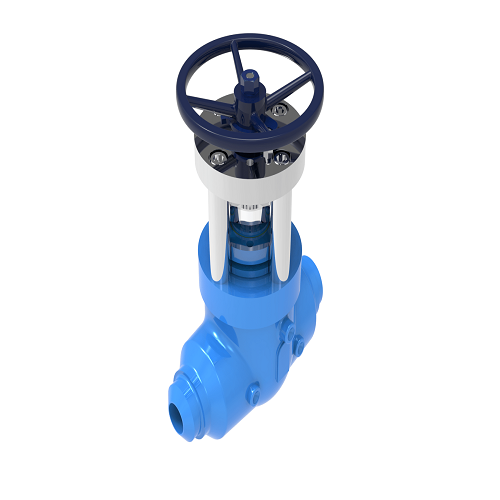
our category
SLIDE VALVE
Slide Valve: An Overview
A slide valve is a type of valve that regulates the flow of fluid (liquid or gas) by the linear motion of a sliding element. Unlike traditional rotary valves, which operate by turning a handle or wheel, slide valves use a sliding mechanism to open or close a flow passage. These valves are commonly used in applications where precise control over the flow is required, particularly in industries like gas, steam, and material handling.
Enquire Now
Key Features of Slide Valves:
- Linear Motion: The valve's sliding element (often a plate or gate) moves back and forth along a track or within a casing to either block or allow the flow of fluid.
- Simple Design: Slide valves typically have a straightforward design consisting of a valve body, a sliding gate or plate, and a mechanism to move the gate (manual or automated).
- Sealing Mechanism: The sealing of the slide valve is achieved through a gasket or seal that ensures no leakage when the valve is in the closed position.
- Variety of Configurations: Slide valves can come in different configurations, such as single or double sliding gates, depending on the application. They can be designed for either on/off or throttling control.
How Slide Valves Work:
The operation of a slide valve is quite simple. When the valve handle or actuator is moved, it causes the sliding plate or gate inside the valve to shift along the valve body. This movement either opens or closes the fluid passage. In the closed position, the valve completely blocks the flow, and in the open position, it allows free passage of the fluid. The sliding action can be achieved manually (by turning a handwheel) or automatically (via electric, pneumatic, or hydraulic actuators).
Common Applications:
- Steam and Gas Systems: Slide valves are widely used in steam and gas systems, especially for controlling the flow of these fluids in power plants, heating systems, and industrial boilers.
- Bulk Material Handling: These valves are used in material handling systems to control the flow of bulk solids such as grains, powders, and other granular substances.
- Water Treatment Plants: Slide valves are employed in water treatment facilities to regulate the flow of water or chemicals within the system.
- Pneumatic Conveying: Slide valves are used in pneumatic conveying systems to isolate or divert the flow of materials or air.
- Process Industries: They are commonly used in process industries, where controlling the flow of liquids, gases, or slurries is critical for maintaining consistent production processes.
Types of Slide Valves:
- Manual Slide Valve: Operated by hand using a handle or wheel to move the slide element.
- Electric Slide Valve: Actuated by an electric motor, offering automated control for remote operation.
- Pneumatic Slide Valve: Driven by compressed air, often used in industrial and factory automation settings.
- Hydraulic Slide Valve: Controlled using hydraulic fluid pressure, typically used in heavy-duty applications.
Advantages:
- Precise Flow Control: Slide valves allow for smooth and precise regulation of the flow, which is particularly beneficial in systems where accurate flow control is essential.
- Simplicity and Reliability: With fewer moving parts compared to other valve types, slide valves are reliable, durable, and easy to maintain.
- Minimal Leakage: The sealing system in slide valves generally provides a very tight seal, minimizing leakage when the valve is closed.
- Versatility: Slide valves can be used in a wide range of applications, from controlling liquids to handling bulk materials, making them highly versatile.
- Cost-Effective: Slide valves are often a cost-effective solution, especially for applications requiring a straightforward method of flow regulation.
Disadvantages:
- Limited Throttling Capability: Slide valves are generally better suited for on/off control rather than precise throttling. For finer flow control, other valve types like globe or ball valves may be preferred.
- Wear and Tear: Over time, the sliding mechanism and seals can wear out, leading to leakage or difficulty in operation.
- Space Requirements: Some configurations of slide valves may require more space for installation compared to other valve types, depending on the application.
Conclusion:
Slide valves are a simple yet highly effective solution for regulating fluid flow in various industrial and process systems. Their ability to control the passage of steam, gas, liquids, or bulk materials makes them ideal for applications in power plants, water treatment, material handling, and more. With their straightforward design, reliability, and versatility, slide valves are an essential component in many fluid control systems. While they may not be the best option for precise throttling, they offer excellent performance in applications requiring reliable on/off flow control.
